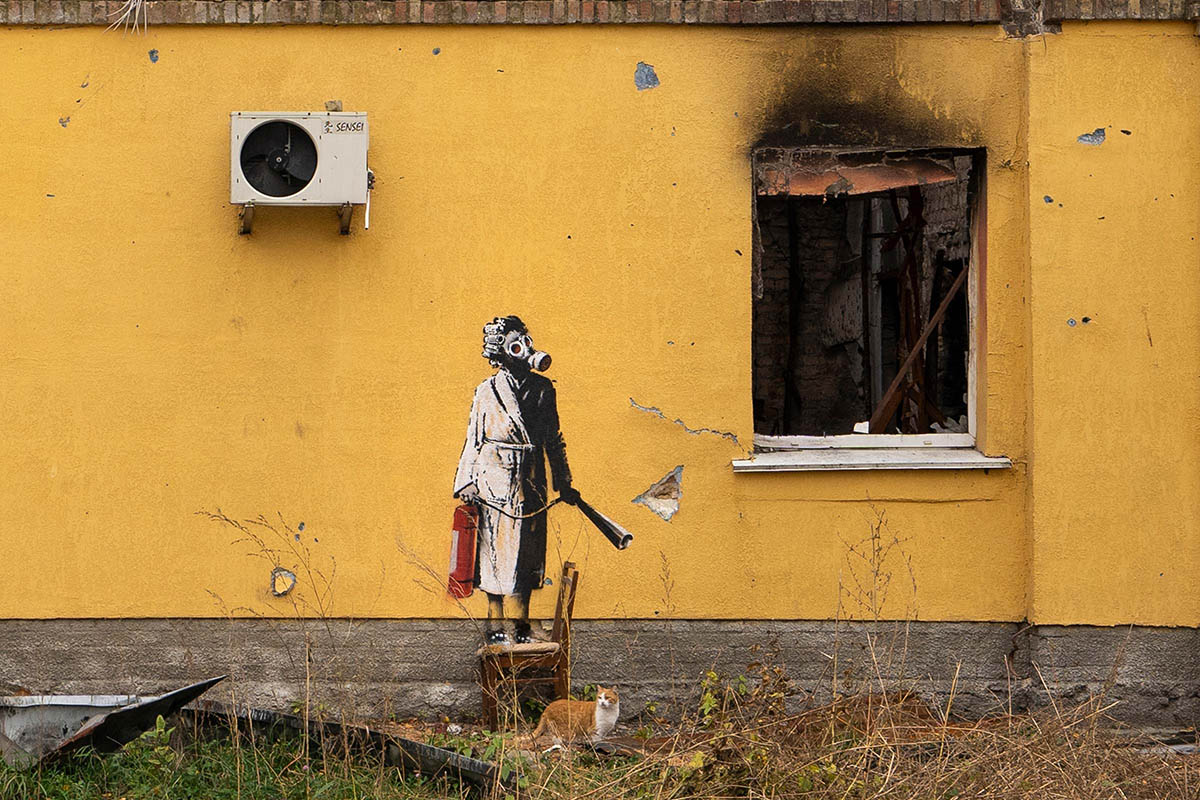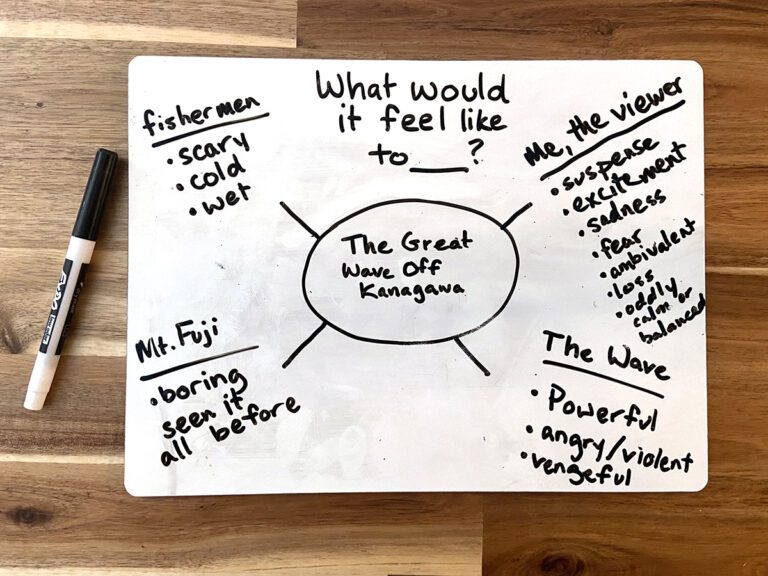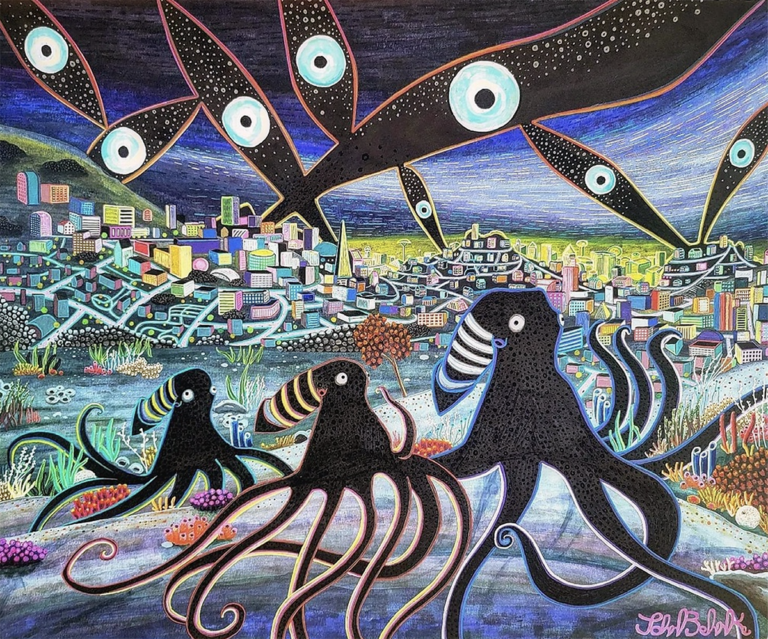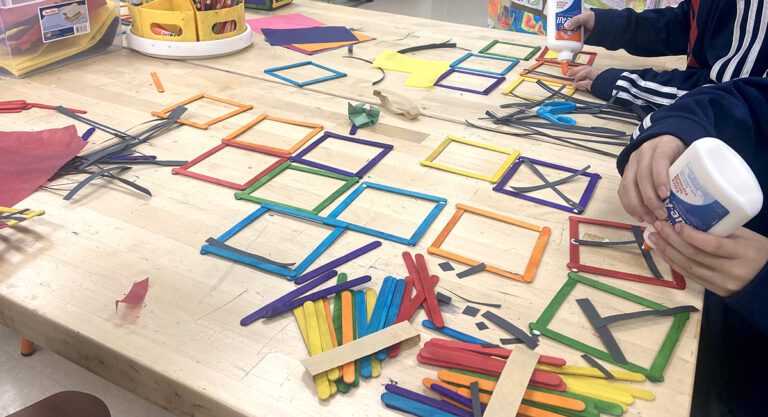Note: Be sure to review all resources and preview all artists and musicians before determining if they are appropriate to share with your students.
Encore, encore! This is what you have been waiting for after reading the first article connecting music and visual art. Since we’re returning for round two, let’s recap a few things. First, music and art go hand in hand with one another, like peanut butter and jelly. Second, music enhances the use of multiple senses. And third, music helps improve memory. Both music and art have similar creative processes and elements that compose a whole.
Listening to music and making art both ignite various parts of the brain. The American Congress of Rehabilitation Medicine discovered that art impacts brain wave patterns, emotions, serotonin, and the nervous system. The Kennedy Center has been studying brains using different machines like MRI scanners. While listening to music, multiple parts of the brain activate to analyze aspects of the song, like rhythm and tone.
Observe the rich similarities between music and visual art with these artists and their musical inspirations!
1. Tim Burton | Rock
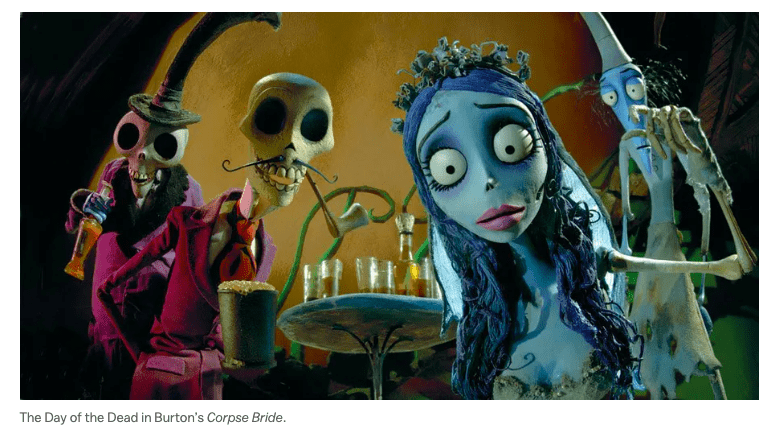
Tim Burton is an artist who spans many mediums. He is an artist, cinema director, film producer, and stop-motion animator. The larger breadth of his work encapsulates creepy, eerie, grotesque, unsettling, and cringe-worthy characters. Burton’s Gothic imagery reflects his enjoyment of The Killers. Hopefully, Burton will animate Jack Skellington dancing to Mr. Brightside one day!
2. Hieronymus Bosch | Traditional Dutch
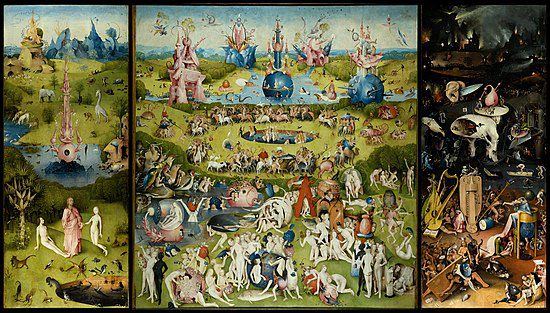
Hieronymus Bosch was a Dutch artist who was part of a super-conservative religious group. Most of his artworks have a Surreal and dream-like (or nightmare-like) quality. One of his most famous pieces is the tryptic The Garden of Earthly Delights. The artwork features heavenly imagery on the left, the garden of earthly delights in the center, and depictions of hell on the right. Listen to harps playing ethereal sounds illustrating heaven, then listen to death metal to represent hell.
Zoom into the right panel—Bosch also painted music notes on one character’s behind! Your classes will have a hoot listening to “rear” music.
While students are reading Bosch’s artist bio in FLEX Curriculum, play some traditional Dutch music in the background to set the scene.
3. Prehistoric Cave Painters | Nature Sounds
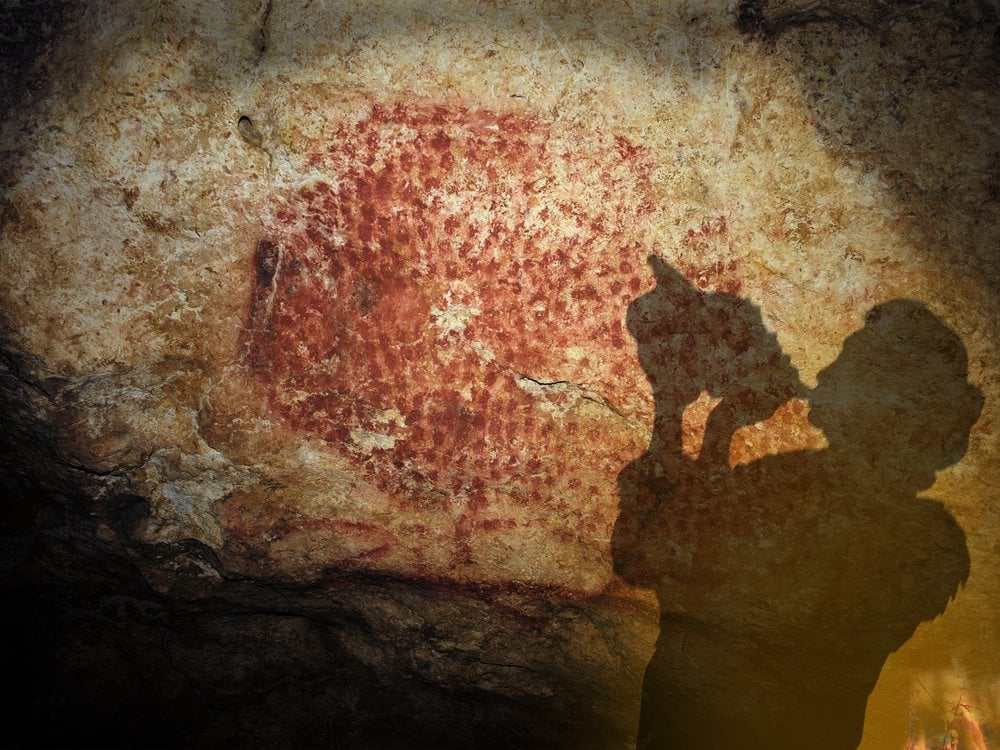
One of the earliest forms of human expression is cave paintings. Excellent examples of Paleolithic cave paintings are in a cave in Lascaux, France. Early humans used the earth to create their pigments. Caves make for great acoustics, so it’s no surprise archeologists found musical instruments in some caves featuring cave art. Flutes and conch shells were common musical instruments.
Use these prehistoric sounds to introduce the Inspired by Cave Art Collection in FLEX Curriculum.
4. Frank Lloyd Wright | Beethoven
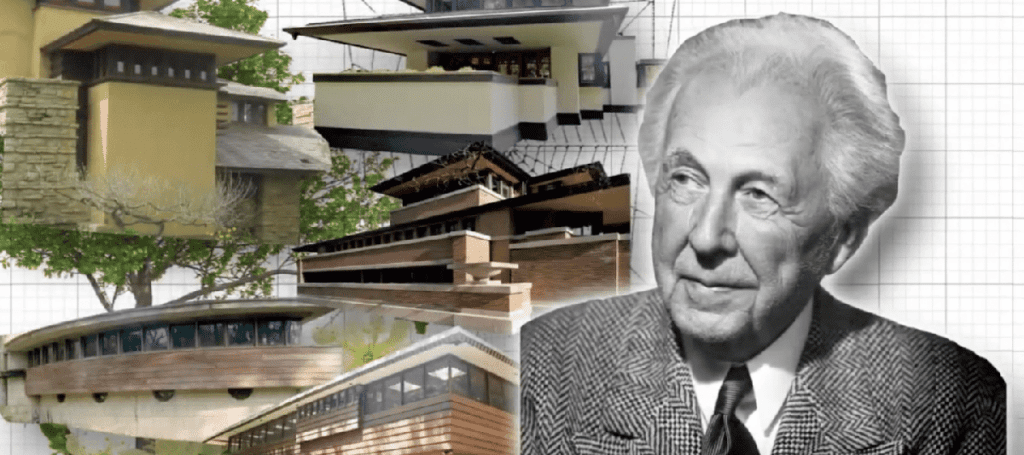
Frank Lloyd Wright was an American architect who made great contributions to architecture. He was heavily influenced by geometric shapes, patterns, and nature. Wright was inspired by the music of Beethoven, Bach, and Brahms.
Download Wright’s artist bio in FLEX Curriculum while relaxing to the sounds of Beethoven’s compositions.
5. Marcel Duchamp | Dada Sounds
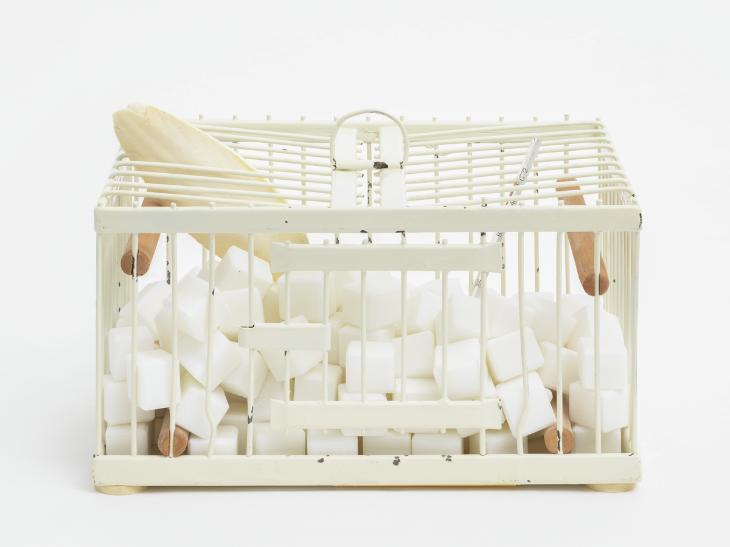
Marcel Duchamp was a French artist who dabbled in a variety of styles. He is most well known for founding the Dada movement with avant-garde experimental drawings and readymade objects (common objects that were often altered). Eventually, Duchamp joined the Surrealist art movement. Duchamp also played with film and music. His musical compositions feature a radical sound for that time period. Take a listen for yourself with the two samples below!
6. Jean-Michel Basquiat | Zydeco
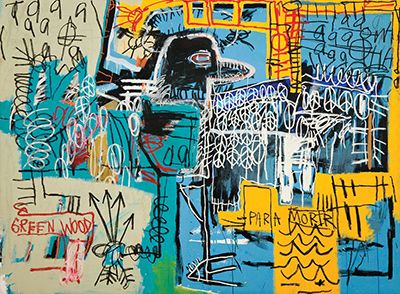
Jean-Michel Basquiat was an influential artist who had a challenging childhood. Basquiat is well known for his expressive marks, stylized imagery, and graffiti illustrations. He would also incorporate words, numbers, and heads into his artwork. Musical influences range from zydeco and Mississippi Delta Blues to Jazz, which all share African roots, like his heritage.
7. Banksy | Obscure Music
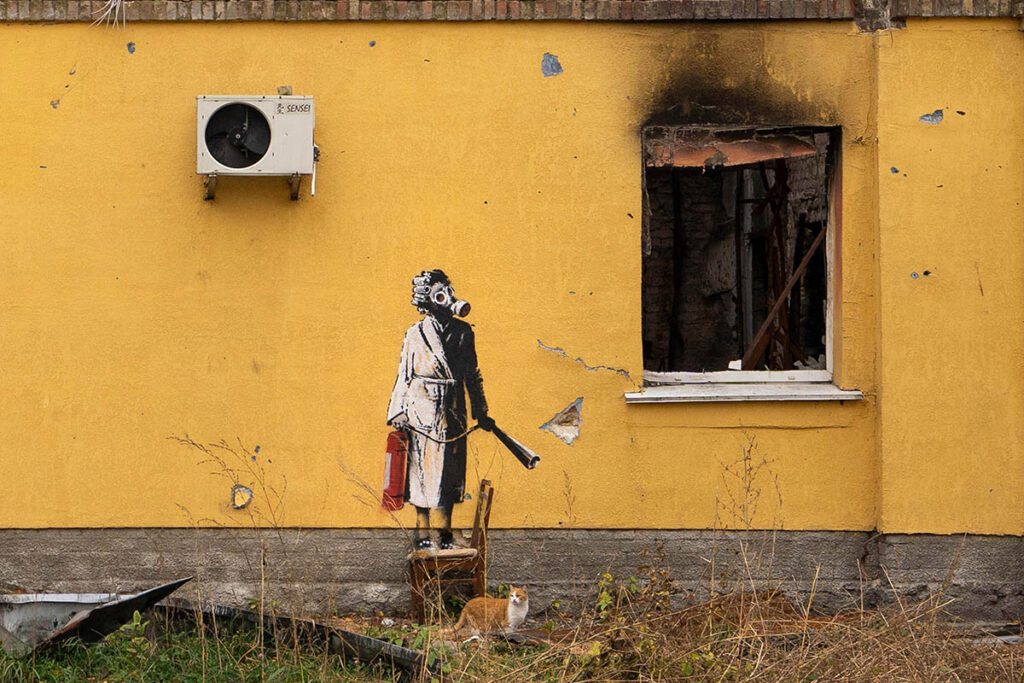
Banksy is an illusive street artist based out of England. Artworks are satirical and humorous while highlighting serious religious, political, and social topics. This artist has experimented with spray paint, stencils, installations, and performance art. Banksy and other artists created Dismaland, a dystopian theme park, in 2015. Music artists Run the Jewels, Massive Attack, and Kate Tempest performed there. This variety of musicians can give us a glimpse into the type of music Banksy likes.
8. Jackson Pollock | Jazz
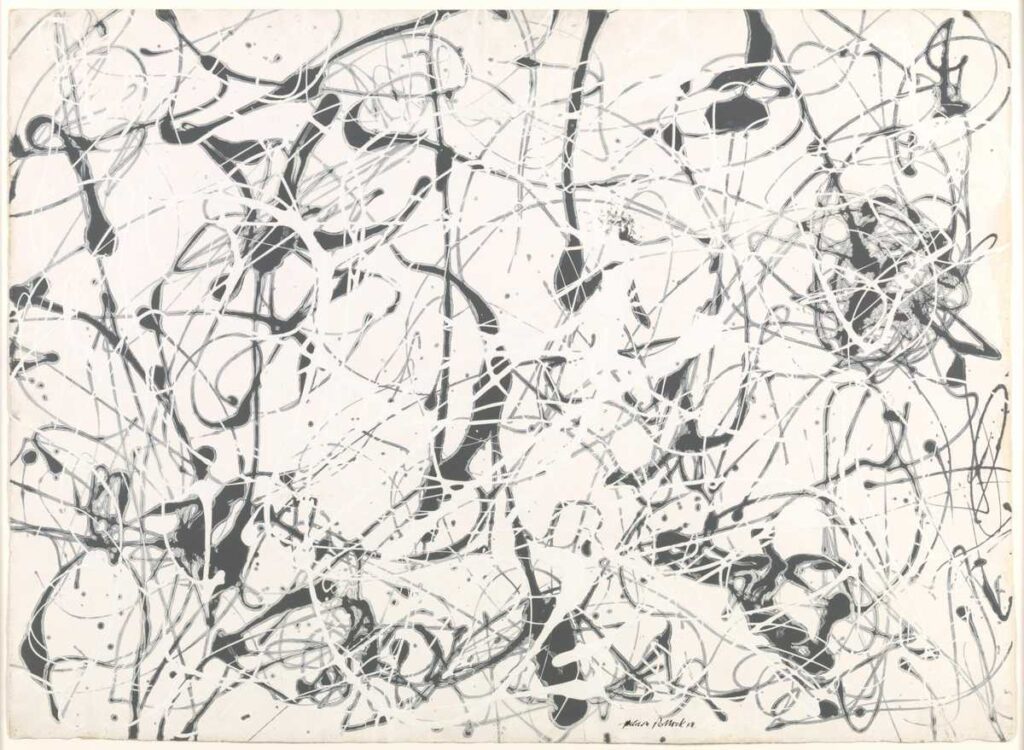
Jackson Pollock was an American artist who specialized in large paintings in which he dripped, splattered, and sloshed paint over a canvas. This style became known as Action Painting because most of these motions were quickly executed using the physical body. Pollock was part of the Abstract Expressionist movement; a group of artists who strayed away from traditional subject matter to let their medium express their ideas. Experimental Jazz, specifically from artists like Dizzy Gillespie, Bird, and Dixieland, was a huge inspiration for Pollock. Like Abstract Expressionism, Jazz can be experimental, raw, and honest.
Share Pollock’s artist bio in FLEX Curriculum and play a sample of Dizzy Gillespie.
9. Christo and Jeanne-Claude | Mozart
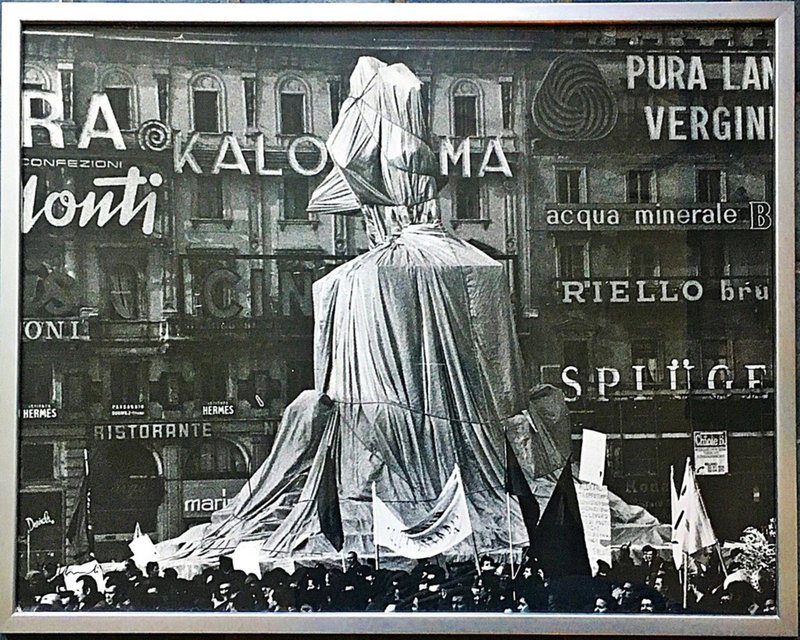
Christo Javavheff and Jeanne-Claude de Guillebon were a married art duo who worked together to drape parks, islands, and buildings with textiles. They created monumental works of art, such as wrapping historic pieces of architecture in the center of a Roman shopping center with polypropylene fabric and red polypropylene rope. The pair also transformed eleven islands near Miami, Florida, by cloaking them with 6.5 million square feet of pink polypropylene fabric. Because Jeanne-Claude believed listening to Mozart raised IQ levels, they played Mozart at her celebration of life ceremony. In addition, whenever the couple showed up to an event and music other than Mozart was playing, they demanded it be turned off!
Music enhances memory, so let’s turn up the radio in our classrooms! Listen to diverse songs and create artworks that mimic the tones, rhythms, and beats. Listen to the sounds of conch shells or hollowed-out bones like the Prehistoric cave artists. Hear the experimental sounds that inspired Jackson Pollock or Marcel Duchamp, and create artwork using the same rhythms. And finally, turn up the volume while listening to Beethoven, Jazz, or Zydeco!
How do you infuse music into your art curriculum?
What style of music inspires your students to create art?
Magazine articles and podcasts are opinions of professional education contributors and do not necessarily represent the position of the Art of Education University (AOEU) or its academic offerings. Contributors use terms in the way they are most often talked about in the scope of their educational experiences.
